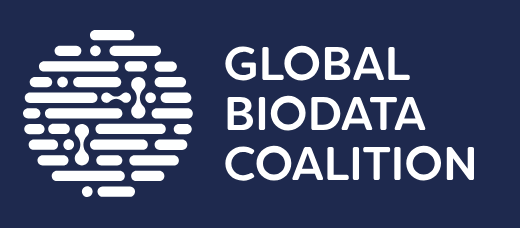The name of this superfamily has been modified since the most recent official CATH+ release (v4_3_0). At the point of the last release, this superfamily was named:
"NAD(P)-binding Rossmann-like Domain
".
FunFam 87: alpha-aminoadipic semialdehyde synthase, mitochond...
Please note: GO annotations are assigned to the full protein sequence rather than individual protein domains. Since a given protein can contain multiple domains, it is possible that some of the annotations below come from additional domains that occur in the same protein, but have been classified elsewhere in CATH.
There are 3 GO terms relating to "molecular function"
The search results have been sorted with the annotations that are found most frequently at the top of the
list. The results can be filtered by typing text into the search box at the top of the table.
| GO Term | Annotations | Evidence |
|---|---|---|
|
Saccharopine dehydrogenase (NAD+, L-glutamate-forming) activity GO:0047131
Catalysis of the reaction: L-saccharopine + H(2)O + NAD(+) = L-glutamate + allysine + H(+) + NADH.
|
2 | Q99K67 (/IDA) Q99K67 (/IDA) |
|
Saccharopine dehydrogenase (NAD+, L-glutamate-forming) activity GO:0047131
Catalysis of the reaction: L-saccharopine + H(2)O + NAD(+) = L-glutamate + allysine + H(+) + NADH.
|
2 | E1BWX4 (/ISS) Q6GN76 (/ISS) |
|
Saccharopine dehydrogenase (NAD+, L-glutamate-forming) activity GO:0047131
Catalysis of the reaction: L-saccharopine + H(2)O + NAD(+) = L-glutamate + allysine + H(+) + NADH.
|
2 | Q9UDR5 (/NAS) Q9UDR5 (/NAS) |
There are 8 GO terms relating to "biological process"
The search results have been sorted with the annotations that are found most frequently at the top of the
list. The results can be filtered by typing text into the search box at the top of the table.
| GO Term | Annotations | Evidence |
|---|---|---|
|
Generation of precursor metabolites and energy GO:0006091
The chemical reactions and pathways resulting in the formation of precursor metabolites, substances from which energy is derived, and any process involved in the liberation of energy from these substances.
|
2 | Q99K67 (/TAS) Q99K67 (/TAS) |
|
Lysine catabolic process GO:0006554
The chemical reactions and pathways resulting in the breakdown of lysine, 2,6-diaminohexanoic acid.
|
2 | Q9UDR5 (/NAS) Q9UDR5 (/NAS) |
|
Lysine catabolic process GO:0006554
The chemical reactions and pathways resulting in the breakdown of lysine, 2,6-diaminohexanoic acid.
|
2 | Q9UDR5 (/TAS) Q9UDR5 (/TAS) |
|
L-lysine catabolic process GO:0019477
The chemical reactions and pathways resulting in the breakdown of L-lysine, the L-enantiomer of (S)-2,6-diaminohexanoic acid.
|
2 | Q99K67 (/IDA) Q99K67 (/IDA) |
|
Protein tetramerization GO:0051262
The formation of a protein tetramer, a macromolecular structure consisting of four noncovalently associated identical or nonidentical subunits.
|
2 | Q9UDR5 (/TAS) Q9UDR5 (/TAS) |
|
L-lysine catabolic process GO:0019477
The chemical reactions and pathways resulting in the breakdown of L-lysine, the L-enantiomer of (S)-2,6-diaminohexanoic acid.
|
1 | E1BWX4 (/ISS) |
|
Regulation of histone methylation GO:0031060
Any process that modulates the frequency, rate or extent of the covalent addition of methyl groups to histones.
|
1 | Q9VLX0 (/IDA) |
|
Histone arginine methylation GO:0034969
The modification of a histone by addition of a methyl group to an arginine residue.
|
1 | Q9VLX0 (/IDA) |
There are 6 GO terms relating to "cellular component"
The search results have been sorted with the annotations that are found most frequently at the top of the
list. The results can be filtered by typing text into the search box at the top of the table.
| GO Term | Annotations | Evidence |
|---|---|---|
|
Mitochondrion GO:0005739
A semiautonomous, self replicating organelle that occurs in varying numbers, shapes, and sizes in the cytoplasm of virtually all eukaryotic cells. It is notably the site of tissue respiration.
|
4 | A4D0W4 (/IDA) A4D0W4 (/IDA) Q9UDR5 (/IDA) Q9UDR5 (/IDA) |
|
Mitochondrion GO:0005739
A semiautonomous, self replicating organelle that occurs in varying numbers, shapes, and sizes in the cytoplasm of virtually all eukaryotic cells. It is notably the site of tissue respiration.
|
4 | Q99K67 (/TAS) Q99K67 (/TAS) Q9UDR5 (/TAS) Q9UDR5 (/TAS) |
|
Intracellular membrane-bounded organelle GO:0043231
Organized structure of distinctive morphology and function, bounded by a single or double lipid bilayer membrane and occurring within the cell. Includes the nucleus, mitochondria, plastids, vacuoles, and vesicles. Excludes the plasma membrane.
|
4 | A4D0W4 (/IDA) A4D0W4 (/IDA) Q9UDR5 (/IDA) Q9UDR5 (/IDA) |
|
Mitochondrion GO:0005739
A semiautonomous, self replicating organelle that occurs in varying numbers, shapes, and sizes in the cytoplasm of virtually all eukaryotic cells. It is notably the site of tissue respiration.
|
2 | Q99K67 (/ISO) Q99K67 (/ISO) |
|
Mitochondrial matrix GO:0005759
The gel-like material, with considerable fine structure, that lies in the matrix space, or lumen, of a mitochondrion. It contains the enzymes of the tricarboxylic acid cycle and, in some organisms, the enzymes concerned with fatty acid oxidation.
|
2 | Q9UDR5 (/TAS) Q9UDR5 (/TAS) |
|
Intracellular membrane-bounded organelle GO:0043231
Organized structure of distinctive morphology and function, bounded by a single or double lipid bilayer membrane and occurring within the cell. Includes the nucleus, mitochondria, plastids, vacuoles, and vesicles. Excludes the plasma membrane.
|
2 | Q99K67 (/ISO) Q99K67 (/ISO) |
